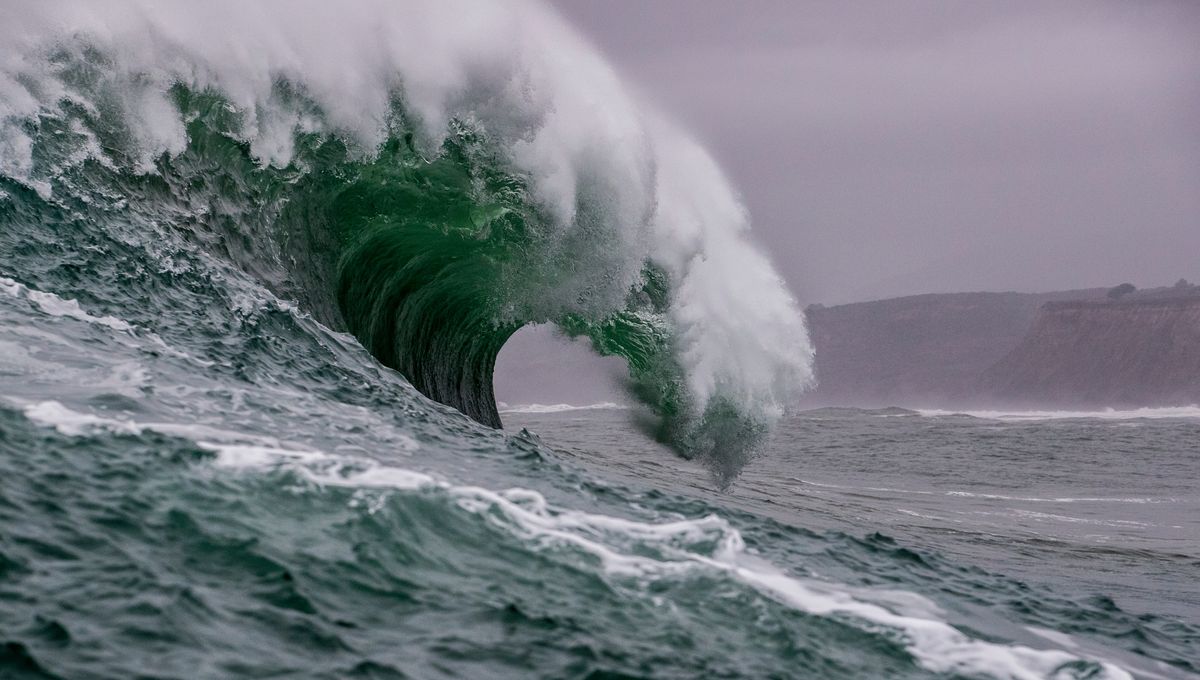
A colossal tsunami that swept through northern Europe more than 8,000 years ago may have decimated the Stone Age inhabitants of northern Britain, according to the results of a new study. Known as the Storegga tsunami, the catastrophe coincided with a sudden decrease in the local population, although until now this decline had never been linked to the disaster.
During the Mesolithic period – or Middle Stone Age – the population of northern Britain was pretty small, with only around 1,000 people estimated to have inhabited the region. The vast majority of these prehistoric Brits would have lived in small coastal settlements, placing them directly in the path of any gargantuan tidal waves.
The archaeological record shows that around 8,200 years ago, the number of inhabited sites across northwest Europe suddenly plummeted. This has been tentatively linked to a sustained drop in temperatures across the continent, although some researchers have argued that coastal communities might not have been impacted by this climactic event.
Intriguingly, the Storegga tsunami also lines up with this mass die-off, having occurred sometime between 8,120 and 8,175 years ago. Triggered by an enormous underwater landslide off the coast of Norway, the event caused monster waves of over 20 meters (65 feet) to batter the Shetland Islands, which lie to the north of the Scottish mainland.
Further south in northern England, the waves would have reached heights of between 3 and 6 meters (10 to 20 feet). To investigate whether the tsunami could have wiped out local populations, the study authors generated computer simulations of the wave at an important Mesolithic site called Howick in Northumberland, northeast England.
Here, sediment cores dated to around the time of the tsunami have been found, suggesting that the site might have become flooded during the disaster. However, the cores are largely filled with coarse rubble, which differs from the fine sandy sediments that are typically deposited by tsunamis. This has caused some disagreement over whether the Storegga wave actually reached Howick or not.
The researchers simulated the wave under two different sea level change scenarios, and found that in neither case did the tsunami reach as far as Howick – unless it happened to strike during high tide. “If a tsunami occurs at high tide it will have a greater inundation distance due to the increase in water height,” they explain.
“The incorporation of the high tide into the… model enhanced the inundation area, with the initial wave inundating the sediment Core A at Howick,” continue the authors. “Furthermore, the wave produced… [was] sufficient to transport coarse gravel,” indicating that this core may indeed have been left by the tsunami.
If this were the case, the consequences would have been catastrophic, with the researchers explaining that “at Howick, mortality estimates varied but were up to 100 percent within the resource-rich intertidal zone.” In addition to killing anyone in its path, the wave would also have wiped out food resources, thus contributing to a massive population decrease throughout northwest Europe.
“This provides evidence to suggest that the tsunami was likely to have been the contributor to the inferred population decline in Northern Britain in the period after 8,200 [years ago] when the tsunami occurred,” conclude the authors.
The study is published in the Journal of Quaternary Science.
Source Link: Massive Tsunami May Have Annihilated Britain’s Stone-Age Population 8,000 Years Ago